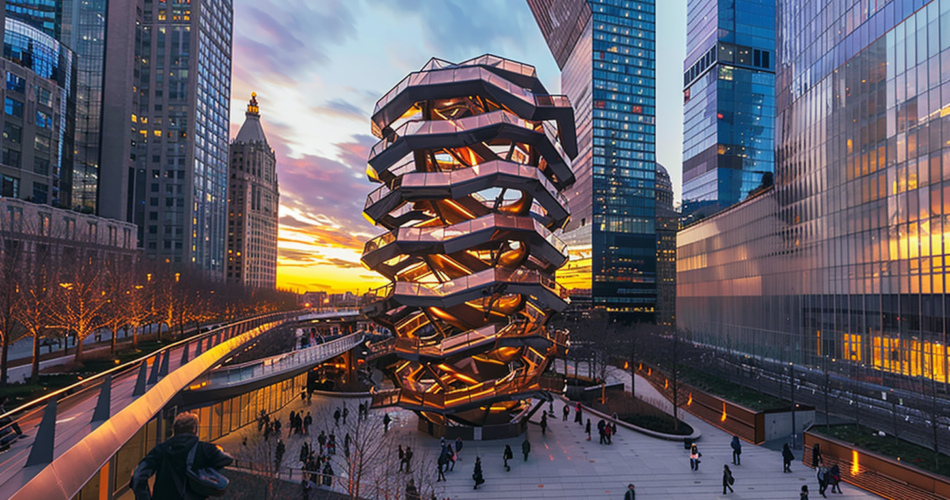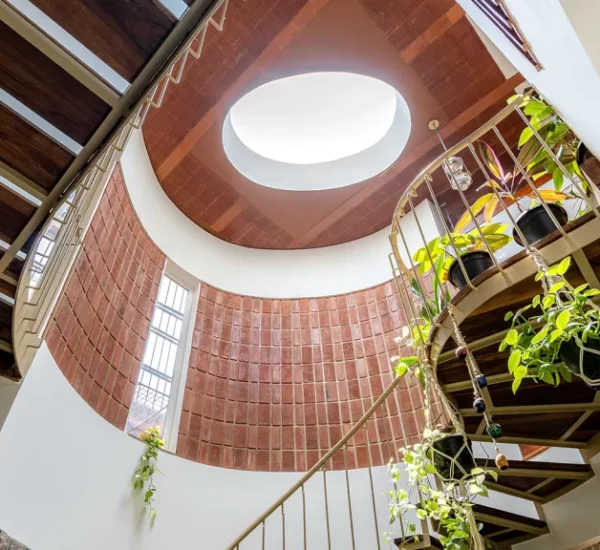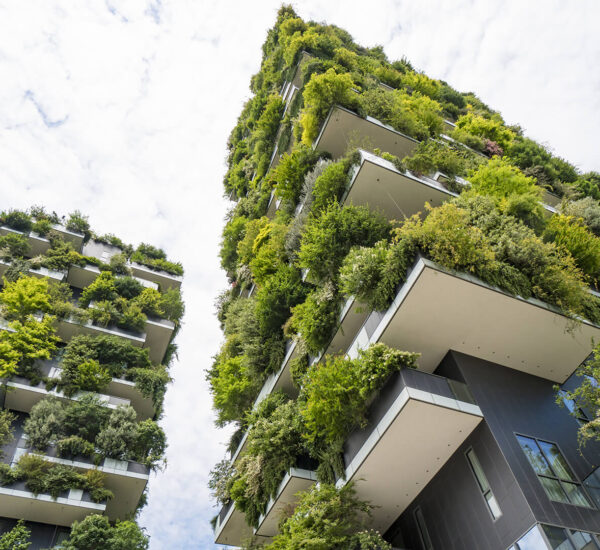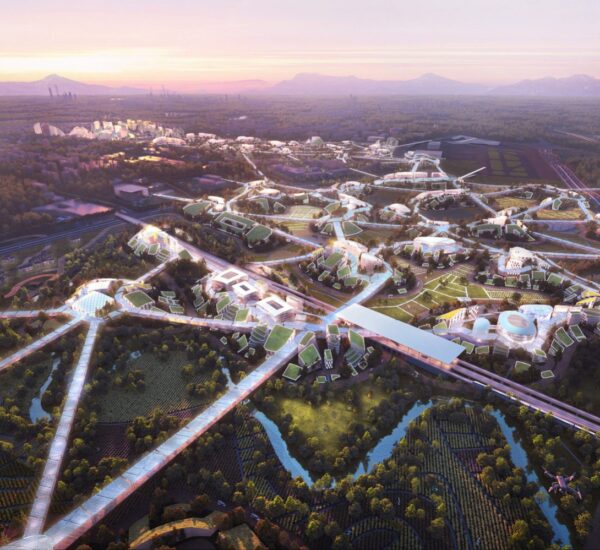Architecture and art have always been intertwined, with each influencing and shaping the other throughout history. From the intricate carvings of ancient temples to the sleek, modern lines of contemporary buildings, art plays a vital role in the creation of architectural spaces. While architecture serves as the functional framework for buildings, art infuses these spaces with meaning, beauty, and identity. In this post, we will explore how art and architecture come together to create spaces that are not only functional but also visually inspiring, emotionally resonant, and culturally significant.
1. Art as an Expression of Cultural Identity in Architecture
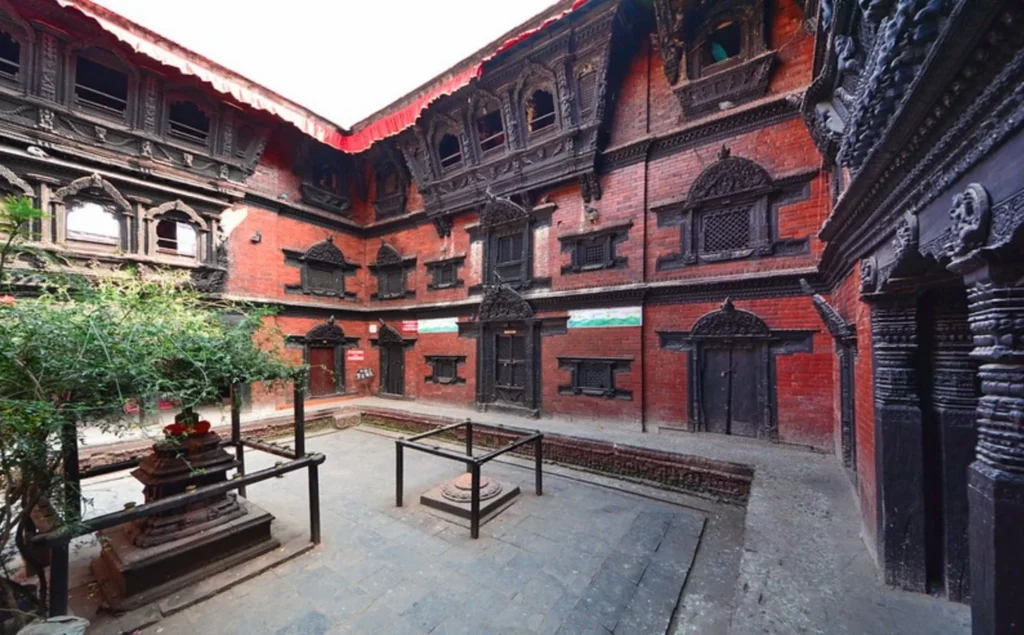
One of the most prominent ways that art shapes architecture is through its role in reflecting and expressing the cultural identity of a community or era. In many architectural traditions, art serves as a visual language that communicates cultural values, beliefs, and history.
- Historical Examples:
- Ancient Greek Architecture: In ancient Greece, the artistic elements of architecture—such as sculptures, friezes, and decorative columns—were integral to the design of temples and public buildings. These elements not only served aesthetic purposes but also expressed ideals of beauty, harmony, and the divine.
- Gothic Architecture: During the Gothic period, cathedrals like Notre-Dame de Paris were adorned with elaborate stained glass windows and sculptures that told biblical stories and celebrated the divine. The artwork within these buildings was not only visually captivating but also served as a means of storytelling and spiritual connection.
- Why It Matters: Art in architecture serves as a bridge between the physical structure and the cultural, social, and emotional aspects of a community. It transforms a building from a mere functional space into a reflection of collective identity and historical context.
2. Art Enhancing the Aesthetic Experience of Space
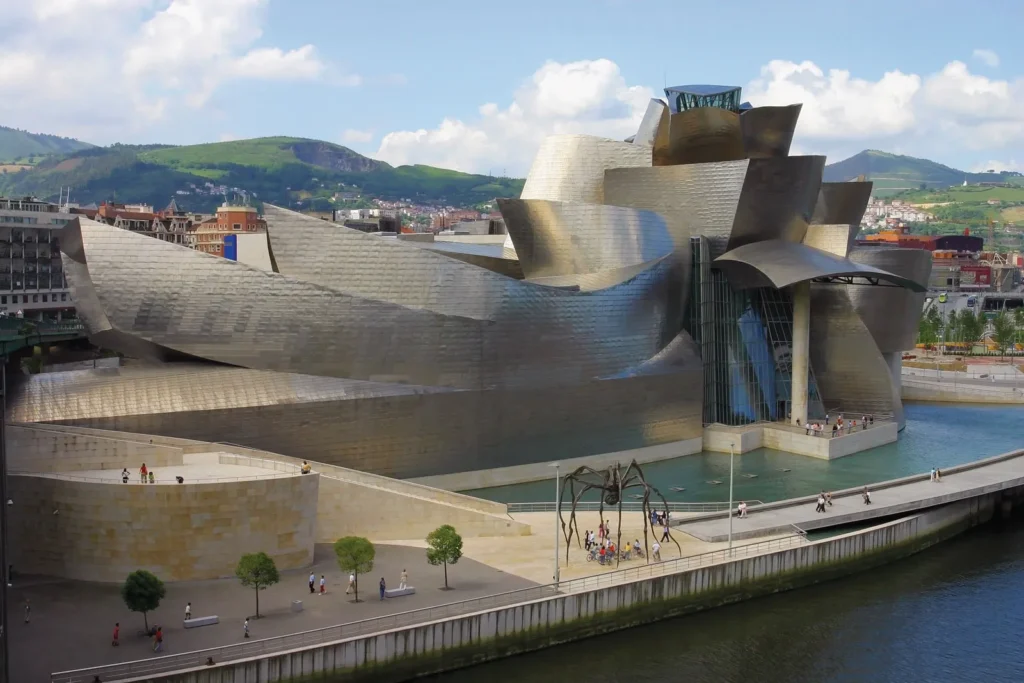
While the primary function of architecture is to create usable spaces, the integration of art enhances the aesthetic quality of these spaces. From murals and sculptures to innovative design features, art introduces visual interest and emotional depth to architectural forms. The relationship between art and architecture in this regard is often symbiotic—architecture provides the structure, while art provides the soul of a space.
- Modern Examples:
- Frank Gehry’s Guggenheim Museum (Bilbao): The design of the Guggenheim Museum in Bilbao is a perfect example of how architecture and art can work hand in hand. Gehry’s iconic curving, organic forms are themselves works of art, while the museum houses contemporary art exhibitions that complement the building’s dramatic architecture.
- Renzo Piano’s The Shard (London): The Shard’s unique glass façade reflects the changing light of the city, creating a dynamic interplay between the building and its surroundings. This ever-changing aesthetic is, in itself, a form of art that contributes to the building’s identity as a piece of the urban landscape.
- Why It Matters: Art within architecture enriches our experience of space, making it not only functional but also visually engaging. The combination of artistic elements in a building can evoke specific emotions, inspire awe, or create a sense of belonging, making the space more meaningful for those who interact with it.
3. Art as a Tool for Humanizing Architecture
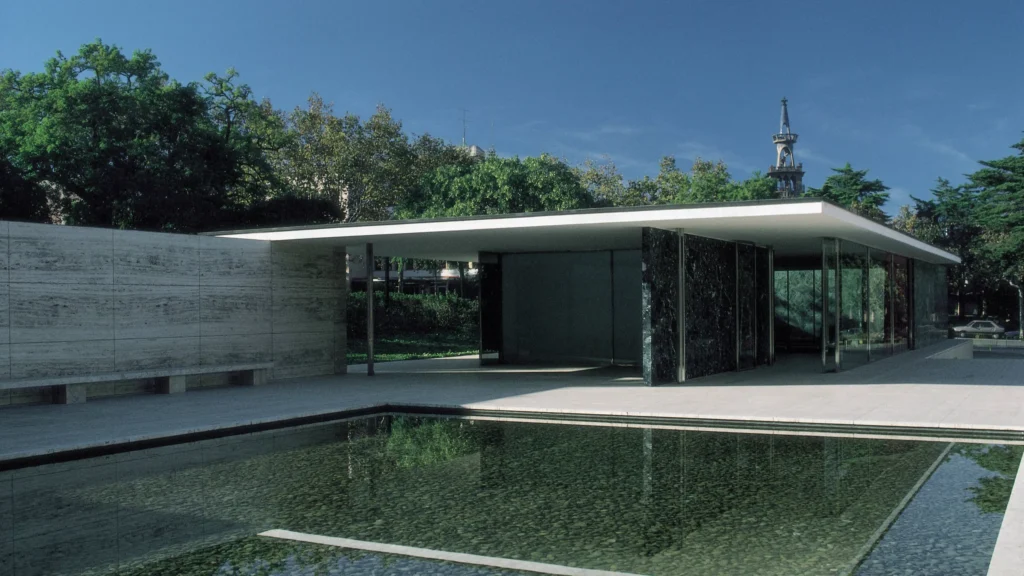
Architecture can sometimes feel cold or impersonal if it lacks elements that speak to the human experience. Art brings a personal touch to buildings, helping them feel more human-centered and connected to the people who use them. Art can create a sense of comfort, wonder, or introspection—qualities that elevate the human experience of architecture.
- Case Studies:
- The Sistine Chapel (Vatican City): The Sistine Chapel’s ceiling, painted by Michelangelo, is a prime example of how art transforms a space. Beyond its architectural significance as a religious space, the stunning artwork in the chapel creates a profound spiritual and emotional experience for visitors.
- The Barcelona Pavilion (Ludwig Mies van der Rohe): Though minimalistic in its design, the Pavilion incorporates art through its use of materials like marble, onyx, and glass, which elevate the simple form of the building. The artful use of space and materials creates an intimate, serene environment for reflection.
- Why It Matters: Art humanizes architecture by creating spaces that evoke emotional responses. By thoughtfully incorporating artistic elements, designers can ensure that a building isn’t just a physical structure, but a place that resonates deeply with its inhabitants and visitors.
4. Collaborative Design: Artists and Architects Working Together
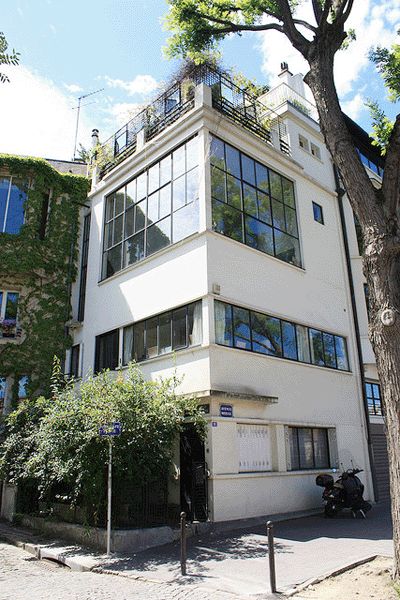
Many of the world’s most iconic buildings have been the result of collaboration between architects and artists, where each discipline brings its expertise to the design process. These collaborations allow for the integration of artistic concepts from the very beginning of a project, ensuring that the final design is cohesive and deeply inspired by both architectural functionality and artistic expression.
- Notable Collaborations:
- Le Corbusier and Amedee Ozenfant: Le Corbusier, the Swiss-French architect, collaborated with the artist Amedee Ozenfant to incorporate artistic elements into his architectural designs. One of the most famous examples of this is the design of the Chandigarh Capitol Complex in India, which blends Le Corbusier’s modernist architectural style with Ozenfant’s artistic vision.
- Luis Barragán and Mathias Goeritz: Mexican architect Luis Barragán famously collaborated with artist Mathias Goeritz to create the “Torres de Satélite,” a series of colorful sculptures that are integrated into the surrounding landscape. The artwork is a reflection of Barragán’s architecture, which uses color and form to evoke emotion.
- Why It Matters: Collaborative design results in more thoughtful, integrated spaces where both art and architecture are harmoniously woven together. These partnerships push the boundaries of both disciplines, creating innovative works that are greater than the sum of their parts.
5. Art as a Vehicle for Social Commentary in Architecture

Art within architecture can also serve as a tool for social commentary, raising awareness about social issues and promoting change. Architects and artists often use public spaces as platforms to engage with communities, challenge conventions, and spark conversations.
- Examples of Socially Conscious Art in Architecture:
- The Vietnam Veterans Memorial (Washington, D.C.): Designed by architect Maya Lin, this memorial uses minimalist architecture and a reflective black granite surface inscribed with the names of fallen soldiers. The memorial’s design allows visitors to engage with the space personally and emotionally, fostering reflection on the costs of war.
- The Berlin Wall Memorial (Berlin, Germany): The architectural design of the Berlin Wall Memorial incorporates art in the form of installation pieces and visual representations of the Wall’s impact on people’s lives. This combination of art and architecture makes the experience of the space deeply powerful and reflective.
- Why It Matters: Art in architecture serves as a conduit for addressing important social and political issues. By embedding artistic elements into buildings and public spaces, architects and artists can challenge societal norms and inspire positive change, making architecture not just a backdrop to life, but an active participant in shaping cultural and political discourse.
6. Technological Innovations in Art and Architecture
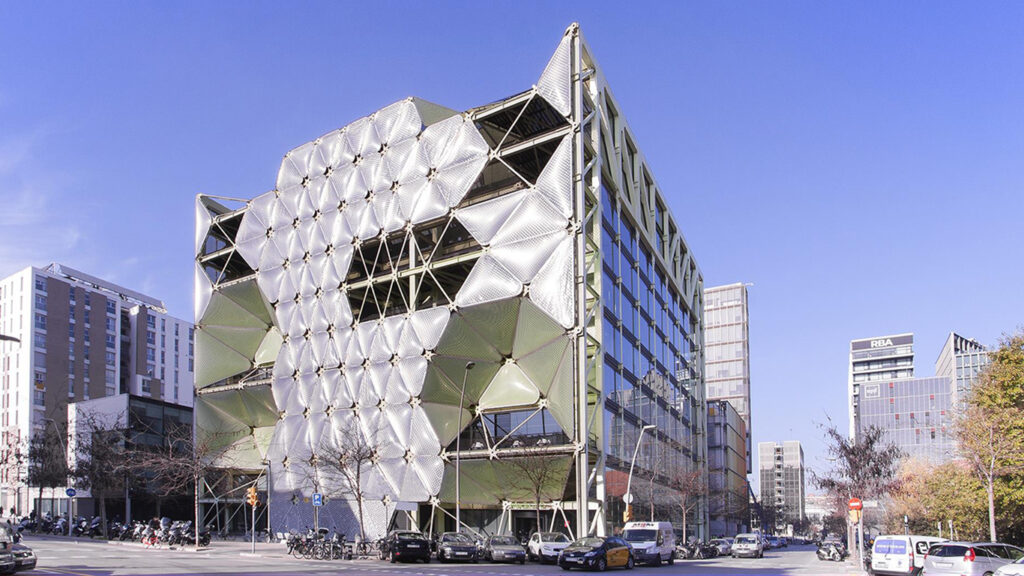
Advancements in technology have allowed architects and artists to experiment with new forms of expression, making the integration of art and architecture more dynamic and interactive than ever before. Digital media, projection mapping, and 3D printing are just a few examples of how technology is creating new possibilities for artistic expression within architectural designs.
- Innovative Projects:
- The Fondation Louis Vuitton (Paris, France): Designed by Frank Gehry, this art museum features a dynamic, glass-clad structure that appears to float above the landscape. The building’s architectural forms are themselves a work of art, with fluid curves and transparent surfaces that reflect light in fascinating ways.
- The Media-TIC Building (Barcelona, Spain): Designed by Cloud 9, this building integrates digital art and interactive technologies into its facade, allowing for a dynamic and constantly changing visual experience for passersby. The building itself becomes a living, breathing artwork, demonstrating how technology can merge art and architecture in groundbreaking ways.
- Why It Matters: Technological advancements open up new opportunities for creativity and artistic expression within architecture. By incorporating interactive or changing elements into building designs, architects can create spaces that engage with their surroundings and visitors in innovative, unexpected ways.
Conclusion
The intersection of art and architecture is a dynamic and evolving relationship that has shaped buildings throughout history. From cultural expression and aesthetic enhancement to social commentary and technological innovation, art plays a crucial role in transforming architecture from mere structure to meaningful space. Whether through the work of individual artists or collaborative design teams, art brings life and depth to architecture, imbuing buildings with a sense of identity, purpose, and emotional resonance. As architecture continues to evolve, the fusion of art and design will undoubtedly remain a powerful force in creating spaces that inspire, engage, and connect us all.

